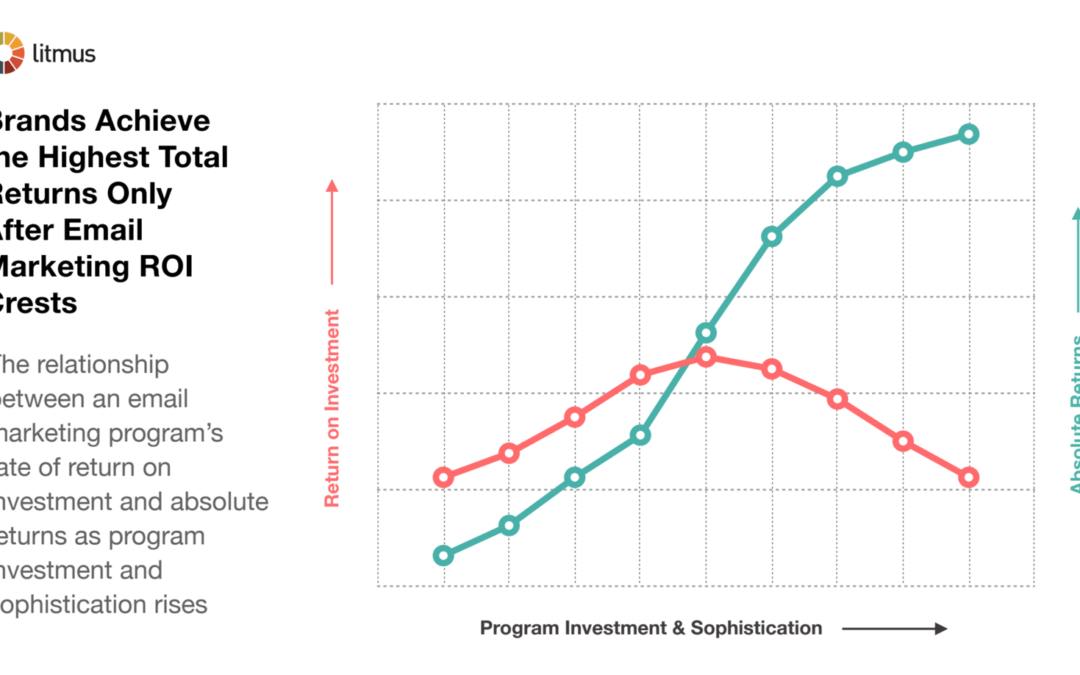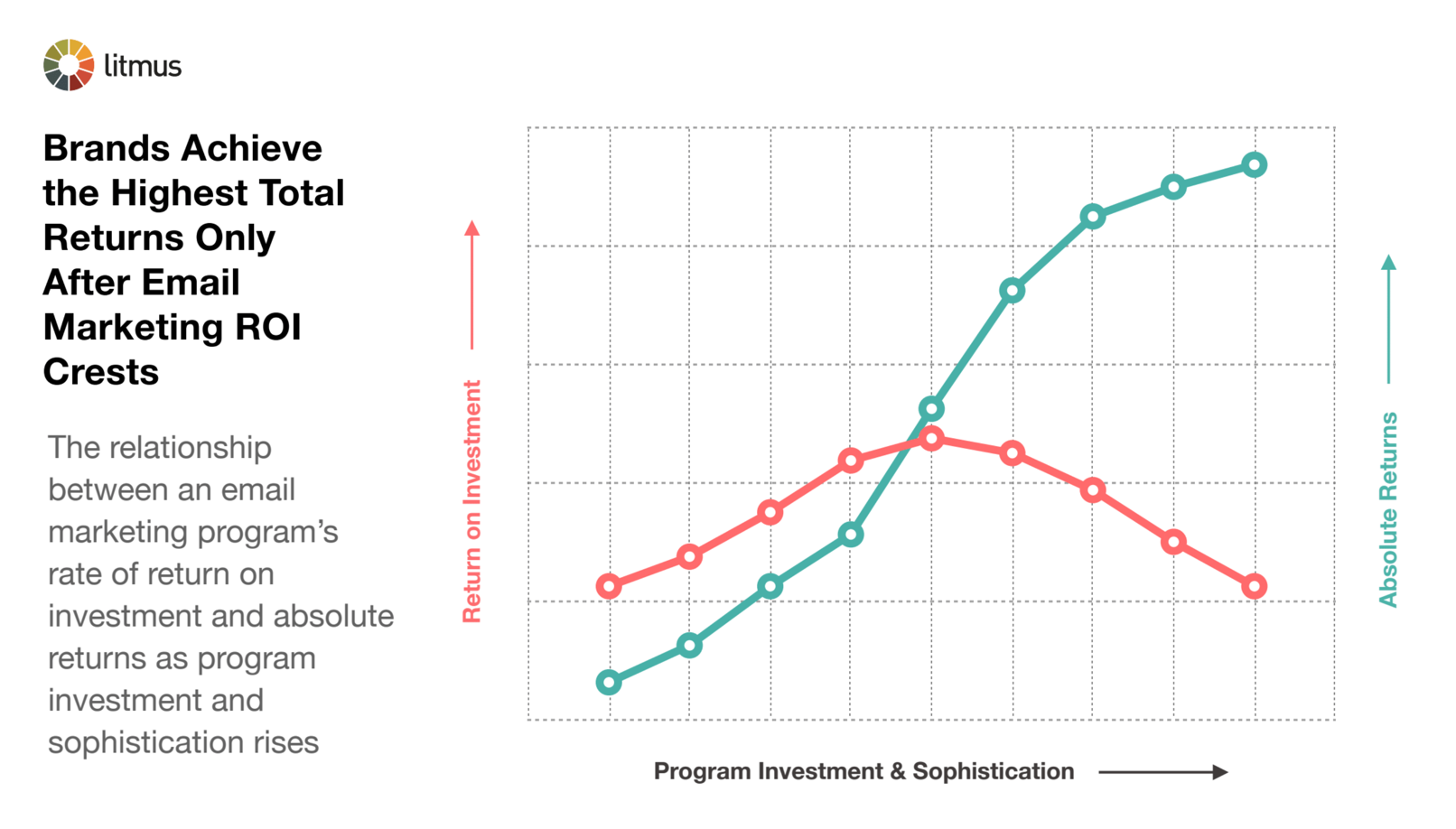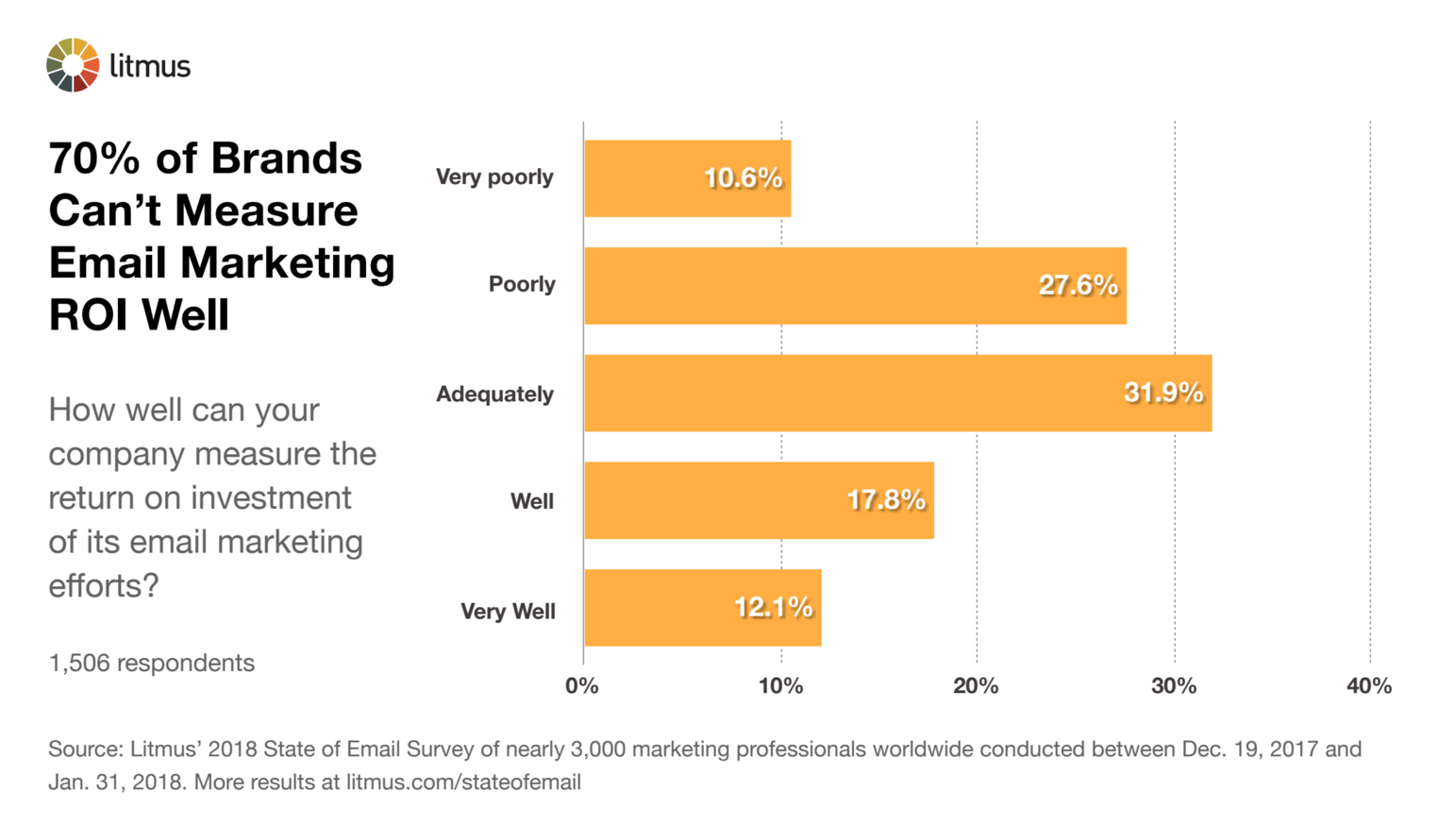Email marketing’s return on investment is 38:1 on average, according to a Litmus survey of 372 marketers worldwide. That’s both good news and bad news… [Tweet this]
The good news is…
That’s a ringing endorsement of email’s acceptance among consumers, its targeting and personalization capabilities, and its business utility. By most measures, the ROI for email marketing is roughly twice that of other digital channels—if not better—and blows away the returns seen with traditional media channels like TV, radio, and direct mail.
The bad news is…
This high ROI misleads marketers and gives them false comfort. Here’s why…
A high ROI for email marketing shouldn’t be the goal.
Marketers clearly identify high email marketing ROIs with success. Brands that describe their email marketing programs as successful report generating an average email marketing ROI of 42:1, while average email programs report a ROI of 37:1.
However, while high rates of return are great, most businesses care much more about absolute returns. Indeed, our research confirms this when we looked at email marketing programs in terms of sophistication.
Marketers who described their email marketing programs as unsophisticated reported an email marketing ROI of 44:1 on average. Programs of average sophistication reported an ROI of 40:1. And sophisticated email marketing programs reported an ROI of 38:1.
The more sophisticated programs show a clear shift in focus from maximizing return rates to maximizing overall returns, which is what you want from a business standpoint. Who cares if the next $500,000 investment you make in your email program generates a 38:1 ROI instead of a 40:1? That’s still so much better than you can make on just about anything else.
However, even among sophisticated programs, the ROI for email marketing is shockingly high. Some have argued that email marketing’s high ROIs are a sign of industry-wide mismanagement.
They make the point that, given the high returns, companies should be investing so much more in their programs that they drive their rates of return down to sane levels like 20:1 or even lower. In doing so, they’ve be driving their absolute returns through the roof.
Part of the reason that isn’t happening may be because…
The ROI for email marketing is so high it often dampens additional investments.
Rather than high ROIs prompting more investments in email marketing, they appear to generally have the opposite effect.
When looking at the email marketing budget changes for 2018, companies that decreased or kept their budget flat for email building, testing, analytics, and other tools had an email marketing ROI of 39:1 on average. In contrast, companies that increased their spending on such tools had an ROI of 36:1.
 |
Increase Your Email ROIIn this 6-page executive summary, email leaders get data-driven advice on how to best increase the return on their email marketing efforts. |
Similarly, companies that decreased or held steady their budget for email education, conferences, and other training had an email marketing ROI of 40:1 versus 35:1 among companies that increased such spending. Also, companies that decreased or kept their budget flat for integration of email with other channels had an ROI of 39:1 versus 36:1 among companies that increased integration spending.
This trend appears to be more evidence of marketers on the front end of the email marketing ROI curve becoming content with a high rate of return rather than pushing full steam ahead to reap the higher absolute returns available on the other side of the curve.
This lack of urgency and growing contentment can also be seen in the fact that…
Many brands can’t measure their ROI for email marketing well—if at all.
Only 30% of brands can measure the ROI of their email marketing efforts well or very well, according to Litmus’ 2018 State of Email Survey. [Tweet this]
This is partially a symptom of some brands simply not being sophisticated enough yet, but we think it’s more than that. Email marketing is so well-known as a high-ROI channel that there’s decreased urgency to measure ROI in the first place.
After all, many programs probably don’t care if their ROI is 30:1 or 15:1. Whatever it is, it’s really good—certainly better than what they’re getting in most of their other channels and definitely good enough to continue.
On the other hand, marketers are much more likely to need to know the ROI of their pay-per-click ads, social media ads, and direct mail pieces because the returns may not actually justify continuing certain campaigns in those channels—or justifying continuing to use the channel at all.
How to Maximize Your ROI for Email Marketing
With all of that in mind, here are three steps to achieve higher overall email marketing returns:
- Better understand the full array of email marketing metrics and what they’re telling you. Also, ensure that you’re measuring the key performance indicators that will keep you in the good graces of inbox providers and subscribers while generating strong returns in your email channel and across other channels that email can effect.
- Start measuring your email marketing return on investment. Start small, with returns you can directly measure, such as revenue generated by subscribers that click though and convert. Then start looking at indirect returns, such as the difference in activity of subscribers compared to non-subscribers in your stores.
- Seek high absolute returns on your email marketing efforts instead of just a high rate of return. That means getting to the other side of the email marketing ROI curve by becoming more sophisticated. To better understand how to get there, download our executive summary on Email Marketing’s Return on Investment and the Factors that Affect It.
Download the free Executive Summary →That executive summary is part of Litmus’ Email Marketing Leadership Series, which aims to help bridge the gap that often exists between email marketers and company leaders. Other briefs in that series include:
- How to Improve Email Review Cycles and Email Approvals
- Email Marketing Staffing & Resourcing for Success
- Interactive Emails: Understanding the Hottest Trend in Email Marketing
- How to Overcome the Biggest Email Marketing Challenges of 2018
The post The ROI for Email Marketing: The Good News and the Bad News appeared first on Litmus Software, Inc..




